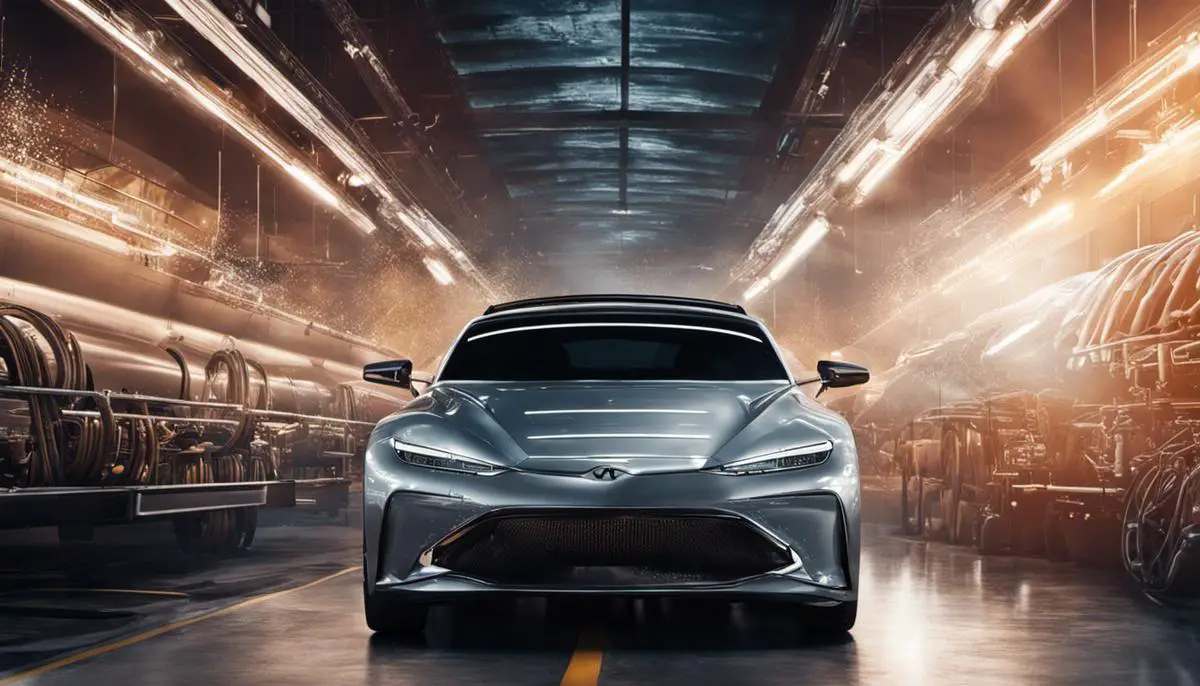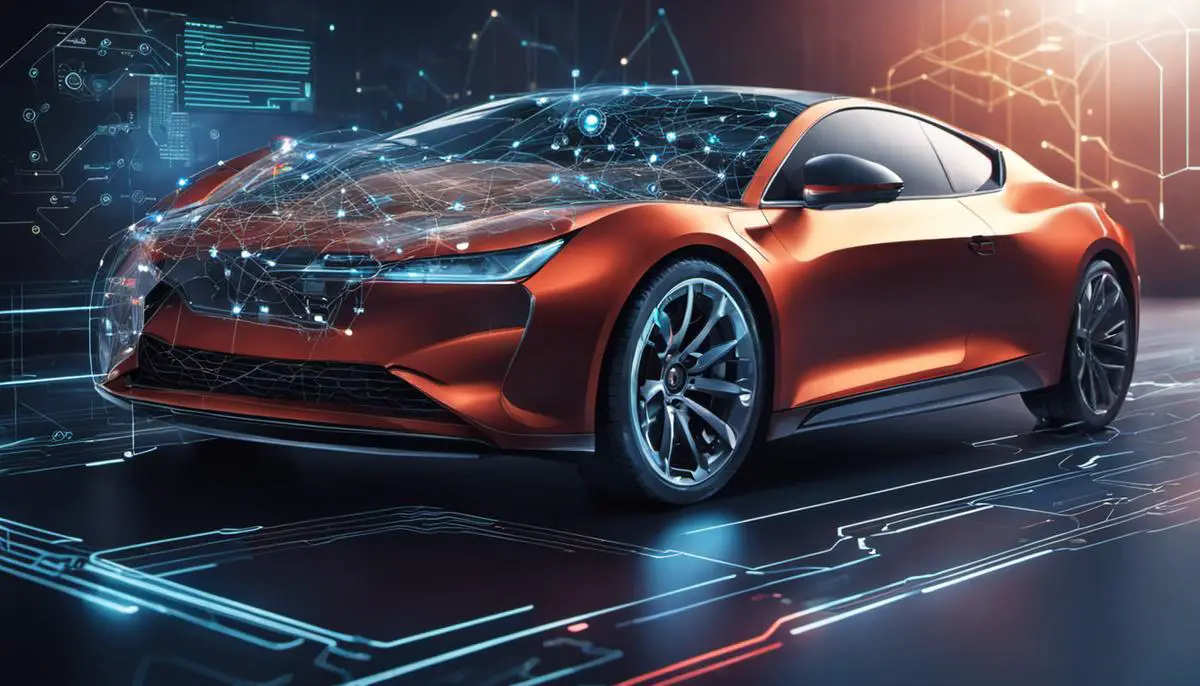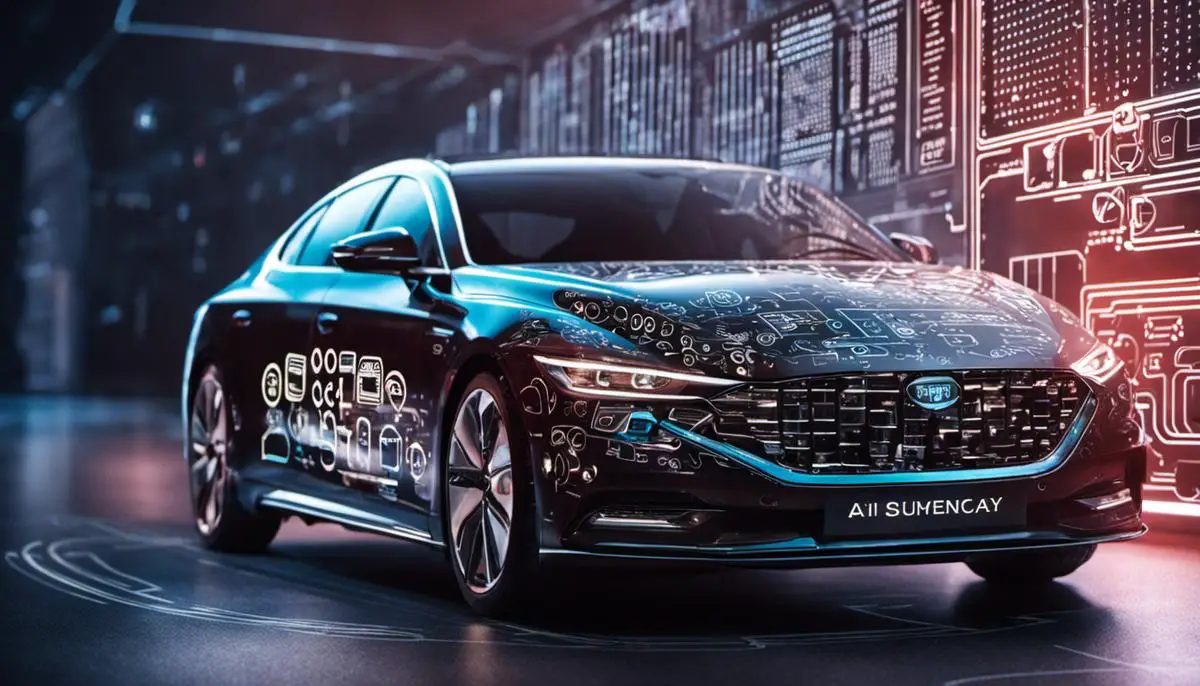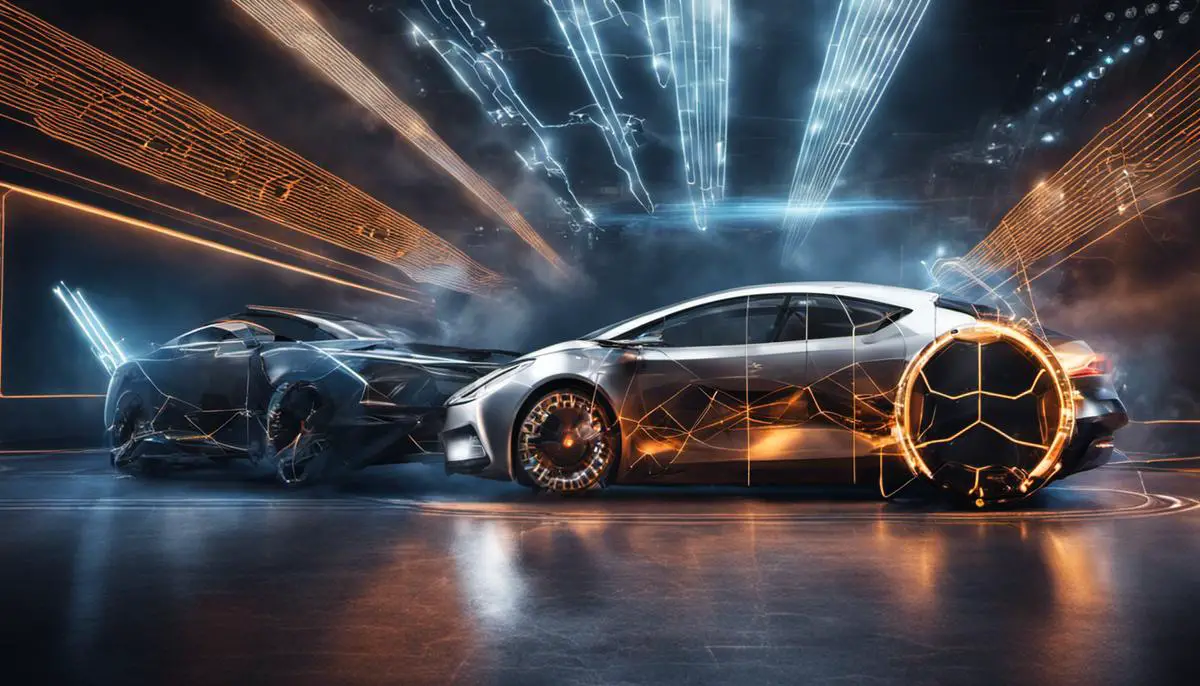AI’s Vital Role in Enhancing Automotive Cybersecurity
The advent of connected automobiles, fueled by the relentless march towards outright autonomy, represents a profound shift in the way we perceive transportation. No longer confined to the realm of science fiction, these modern marvels of engineering operate on complex systems connecting them to the Internet, an evolution that opens up an entirely new front: cybersecurity. Modern vehicles are becoming increasingly vulnerable to an array of cyber threats – a risk factor that cannot be overlooked. In this context, Artificial Intelligence (AI), already altering various landscapes, emerges as a formidable ally in reinforcing cybersecurity in the automotive industry. From smart navigation systems, intelligent vehicle control, to enhanced cyber threat management.
Understanding Cybersecurity in Modern Automobiles
Connected Vehicles and Cybersecurity Threats
The advancements in the automotive industry have transformed cars into sophisticated machines with connected technologies. Modern vehicles are now equipped with features such as Wi-Fi, GPS, and advanced infotainment systems allowing them to connect to the internet and exchange data with other devices and systems. While these advancements have revolutionized mobility, they have also led to a surge in potential cyber threats.
Modern vehicles can be exposed to a variety of cyberattacks, including data theft, unauthorized access to vehicle systems, and even remote hijacking. Consequently, automotive cybersecurity has become a crucial aspect to safeguard connected vehicles from potential threats.
The Role of AI in Automotive Cybersecurity
Artificial Intelligence (AI) plays a predominant role in bolstering automotive cybersecurity. AI systems work around the clock to identify and fend off potential threats, ensuring the safety and security of both vehicles and their users.
AI can analyze large volumes of data generated by a car’s various components to identify anomalies that may indicate a cyber-attack. By monitoring data such as driver behavior, vehicle performance, and network traffic, AI can quickly detect unusual activities and respond in real-time to mitigate any potential damage.
Machine Learning in Preventive Measures
In addition, machine learning, a subset of AI, aids in the predictive analysis of cyber threats. It enables the AI system to learn from past cybersecurity incidents and anticipate future attacks. Machine learning algorithms continuously study previous hacks, learning their patterns and triggers to build more effective defense strategies.
AI’s Autonomous Response to Cyber Threats
Furthermore, AI’s capabilities extend beyond detecting and preventing cyber threats. In circumstances where an attack occurs, AI systems are programmed to take autonomous action to contain the breach and minimize its impact. This could involve isolating compromised systems or initiating countermeasures to neutralize the threat, even without human intervention.
AI and Future Automotive Cybersecurity
With the introduction of autonomous vehicles and the rapid implementation of IoT devices in cars, the cybersecurity landscape in the automotive industry is expected to become more complex, making AI an invaluable asset. It’s predicted that the future of automotive cybersecurity will rely heavily on AI and machine learning to navigate this evolving landscape and provide necessary protection against sophisticated cyber threats.
To wrap things up, the contribution of AI to automotive cybersecurity is immense and layered. It identifies, learns, combats, and independently addresses cyber threats, solidifying its role as a key instrument in the safeguarding of both interconnected and autonomous vehicles. As technological advancement in the automotive industry continues its rapid pace, the reliance on AI for cybersecurity will only grow, acting as a safety net for the vehicles of our future.

Introduction to Artificial Intelligence (AI) in Automotive Industry
Unfolding the Concept of Artificial Intelligence (AI)
Artificial Intelligence, commonly referred to as AI, is a branch of computer science that designs and implements machines to replicate human intelligence. The simulation includes learning, reasoning, problem-solving, comprehension, and language processing among others. In recent years, its influence has diffused into various sectors, including automotive. Here, AI has been utilized for tasks such as steering control systems, intelligent navigation, and predictive servicing, to name a few.
Role of AI in Automotive Cybersecurity
When it comes to automotive cybersecurity, AI plays an instrumental role. Vehicles today are more than just mechanical devices; they are integrated with software and connectivity features that can be vulnerable to cyber threats. AI can help detect and prevent these attacks through predictive analytics and machine learning algorithms.
Using AI for Threat Detection
One of the primary ways that AI helps enhance security in the automotive industry is through threat detection. AI systems, equipped with machine learning, analyze data from various sources such as vehicle sensors, the cloud, and the internet. This system continuously learns from the data it receives, allowing it to identify potential threats and vulnerabilities that may exist within the vehicle or network. Upon detection, AI can inform security protocols to take immediate action, preventing potential breaches.
Improving Response Time with AI
Response time is crucial in automotive cybersecurity. When a threat is detected, the speed at which it is dealt with can mean the difference between a thwarted attack and a successful one. AI allows for real-time monitoring and swift responses during potential cyber threats. AI systems can react almost instantly to any unusual patterns or behaviors, minimizing the time frame in which attackers can exploit vulnerabilities.
AI in Predictive Maintenance
AI also plays a role in predictive maintenance, ensuring that the software systems within the vehicle are running optimally and are not susceptible to attacks. This preventive measure involves analyzing data related to the performance and health of software systems, predicting potential issues, and deploying patches or fixes as necessary. With AI, the vehicle can remain one step ahead of the hackers.
Challenges faced
Although AI offers many benefits when it comes to automotive cybersecurity, it’s not without its challenges. Among the most prominent is the issue of data privacy. Since AI systems require extensive data for training and predictive purposes, there needs to be rigorous data privacy measures in place to protect users’ sensitive information. Additionally, as AI models become more complex, so does their vulnerability to adversarial attacks, leading to the weaponization of AI by malicious entities.
Conclusion
Artificial Intelligence (AI) is increasingly playing an integral role in enhancing automotive cybersecurity. While still in its evolutionary phase, AI has demonstrated considerable success in combatting certain cyber threats plaguing today’s advanced, connected vehicles. However, there is a caveat – it might not be effective against every type of cyber risk. Despite this, as AI technology advances and matures, it promises to bring transformative changes to automotive cybersecurity, elevating the security levels of our increasingly connected transportation network.

Impact of AI on Automotive Cybersecurity
Unveiling the Role of AI in Automotive Cybersecurity
The emergence of AI has truly revolutionized automotive cybersecurity. Modern vehicles are imbued with advanced technology and interconnected systems. Unfortunately, these advancements also open up avenues for cyber threats, which can range from software manipulations to personal data theft, and even, the frightening potential of gaining control over vehicle functions. The silver lining here is AI’s increasing involvement in bolstering automotive cybersecurity. The technology offers promising solutions for adeptly identifying, pre-empting, and effectively addressing these cyber threats.
Detection of Cyber Threats in Automobiles
AI, through its subsets like Machine Learning (ML) and Deep Learning (DL), plays a crucial role in the detection of cyber threats. By using ML algorithms, vehicles can detect anomalies and irregularities within their systems in real-time. ML models are trained to understand the normal functioning of vehicle systems and then alert the system of any unusual activities that may signify cyber threats. On the other hand, DL algorithms can help overcome the limitations of traditional cybersecurity methods by identifying complex, multi-stage attacks that require a deeper understanding of system behavior.
Prevention of Cyber Threats in Automobiles
AI technologies have proven valuable in the prevention of cyber threats in automobiles. Systems backed by AI can recognize patterns and predict cyber threats before they occur. They analyze historical data and trends to prevent similar attacks from happening in the future. These systems focus not only on preventing data breaching but also on the protection of the vehicle’s control system. Vehicles equipped with AI technology can also alert drivers and system operators about potential cyber threats, allowing preventative measures to be taken.
Response to Cyber Threats
AI’s role in automotive cybersecurity extends to responding to and mitigating cyber threats. Responses can take various forms, such as isolating the infected systems, disrupting unauthorized communications, and patching vulnerabilities. AI allows for automated and immediate responses, reducing the time taken to mitigate threats and consequently reducing the damage they cause.
The Application of AI Technologies in the Realm of Automotive Cybersecurity
In the contemporary age of smart vehicles, a variety of AI technologies are being used to enhance the safety and security of vehicles. Machine Learning, one of the primary AI technologies, involves feeding data into systems. This process allows systems to learn, predict, and make decisions geared towards detecting and countering cyber threats. Furthermore, Machine Learning enables systems to utilize past experiences to improve future responses.
Deep Learning, a specialized branch of machine learning, leverages neural networks that are based on the structure of the human brain to perform data analysis and prediction tasks. Deep Learning is proficient in identifying intricate and subtle patterns in large datasets, a skill that is critical in recognizing complex threats. This technology is additionally utilized to detect system anomalies which could potentially indicate security threats.
Even though the integration of AI in automotive cybersecurity is at an early stage, it is already showing promising signs for the future. AI has the potential to substantially bolster the security of modern vehicles which, without AI, are vulnerable to a multitude of cyber threats. AI’s exceptional capability to learn and respond to threats in real-time suggests that it could serve as a potent defense against future vehicle cyber-attacks.

Case Studies of AI Application in Automotive Cybersecurity
Real-world Applications and Advantages of Harnessing AI for Automotive Cybersecurity
The automotive industry is perpetually seeking ways to harness current technological advancements to strengthen its security measures. Increasingly, auto manufacturers are employing the power of Artificial Intelligence (AI) to safeguard vehicles from cyber threats.
Notably, Tesla is at the forefront of leveraging AI for security solutions. The brand consistently improves the security features of its electric vehicles via ‘over-the-air’ software updates, many of which incorporate AI-based technology. In 2018, Tesla took a further step by launching its own AI chips that are designed to assure enhanced cybersecurity and improved car functionality. These chips facilitate ongoing threat monitoring and swiftly respond to potential attacks, a crucial requirement in today’s era of connected vehicles.
Harman, a subsidiary of Samsung, has designed an AI-driven system called SHIELD (Secure, Hardened, Intelligent, Lightweight, Detect). SHIELD leverages machine learning algorithms to discern abnormal activity, identify potential threats, and pinpoint software vulnerabilities within a vehicle’s IT architecture. AI enables this forward-thinking strategy, drastically curtailing potential risks and thereby bolstering the vehicles’ overall security.
Another prominent player, Argus Cyber Security, uses AI in its Intrusion Detection and Prevention System (IDPS). Through this system, data traffic in and around a vehicle is analyzed to spot suspicious behavior. Such innovative capabilities allow for the early detection of potential threats, consequently reinforcing the vehicle’s security.
Companies such as Upstream Security utilize an AI-powered cloud platform to analyze automotive data and detect any abnormalities that could point to a potential cyber threat. This proactive approach aids in identifying malicious activity before it escalates into a larger issue, ensuring the vehicle and occupant safety.
The tangible benefits of employing AI in vehicle security include enhanced vehicle safety and resilience against cyber threats, due to the technology’s ability to identify and promptly address these threats. Furthermore, AI’s capacity for real-time learning, updates, and adaptations allow vehicles to stay one step ahead of potential cyber attackers.
In conclusion, the contribution of AI to automotive cybersecurity is of paramount importance. As vehicles continually become more networked and reliant on software, the risk of cyber threats correspondingly increases. AI provides an efficient and effective solution to these threats, offering proactive, robust defenses against prospective cyber-attacks. With this continued progress, the contribution of AI to automotive cybersecurity will undoubtedly increase in significance.

The Future of AI in Automotive Cybersecurity
Current Landscape of AI in Automotive Cybersecurity
Artificial Intelligence (AI) serves as a pivotal component in the contemporary realm of Automotive Cybersecurity. As tech advancements make cars more connected, causing a surge in data transfer among multiple devices, fresh security concerns arise. These evolve into potential access points for hackers. Therefore, AI emerges as the key resource to identify and neutralize these threats early.
Future Trends in Automotive AI Cybersecurity
As AI continues to evolve, so too does its role in auto cybersecurity. One anticipated trend is the use of AI for predictive analysis. Machine learning algorithms could be used to analyze patterns and detect anomalies in vehicle performance data, thereby predicting a potential security breach before it occurs.
AI and machine learning are also expected to revolutionize the field with the concept of adaptative security. It doesn’t only help in detecting vulnerabilities and breaches but will also be capable of responding to them in real-time, all by itself. This gives the system an ability to defend itself without waiting for human intervention.
AI-Driven Secure Vehicle-To-Everything (V2X) Communications
V2X stands for Vehicle-to-Everything, ensuring all-round communication, which includes Vehicle-to-Vehicle (V2V), Vehicle-to-Infrastructure (V2I), Vehicle-to-Network (V2N), and Vehicle-to-Pedestrian (V2P) communications. V2X technology is a stepping stone for developing autonomous vehicles which can’t be breached. AI has a strong potential to make this communication more secure and reliable, ensuring safer roads and driving experiences.
Challenges and Opportunities in AI-Powered Automotive Cybersecurity
Despite the exciting developments, AI in automotive cybersecurity is not without its challenges. One of the significant issues is the requirement of a large volume of data for training AI models. Gathering such data while respecting privacy rules can be a hurdle. Moreover, as AI systems get more complex, they become hard to interpret and understand, raising concerns about their reliability.
On the flip side, this opens up vast opportunities for AI and cybersecurity professionals. As the demand for secured AI-driven vehicles increase, professionals who can integrate these two fields will be highly sought after, marking a positive growth trend for jobs in this sector.
Laws and Regulations around AI in Automotive Cybersecurity
As AI starts playing a critical role in auto cybersecurity, it certainly calls for a revision in rules and regulations. Legislations should be updated to cover AI’s role, usage, and limitations to ensure safety. An example being the need for clear legislations around AI systems’ decision in a critical event, such as a potential collision.
In conclusion, AI’s role in automotive cybersecurity is expected to become ever more crucial as we make progress towards a world of autonomous and connected vehicles. It’s essential to continue the exploration and research to overcome challenges and take advantage of opportunities in this landscape.

As we continue to explore the possibilities and potential of AI technologies like Machine Learning and Deep Learning, the future outlook for automotive cybersecurity becomes ever more pivotal. AI-driven cybersecurity strategies have demonstrated considerable promise, as evidenced by numerous case studies where tangible benefits are already evident. However, alongside the opportunities AI presents, challenges also surface, from technological constraints to ethical and privacy considerations. The process of integrating AI into automotive cybersecurity is transformative and balance would be the key to steer past these challenges. The realization of a world where automobiles are impervious to cyber threats is on the horizon, ushered in by the dynamism and proactive adaptation of AI technologies.
